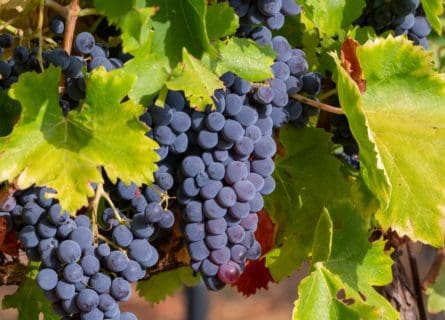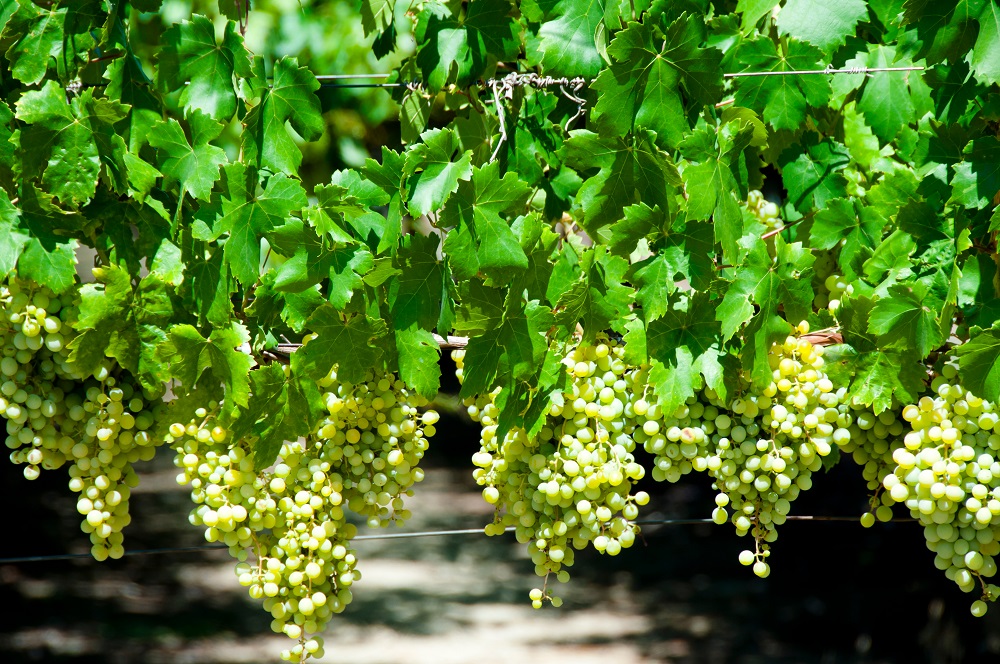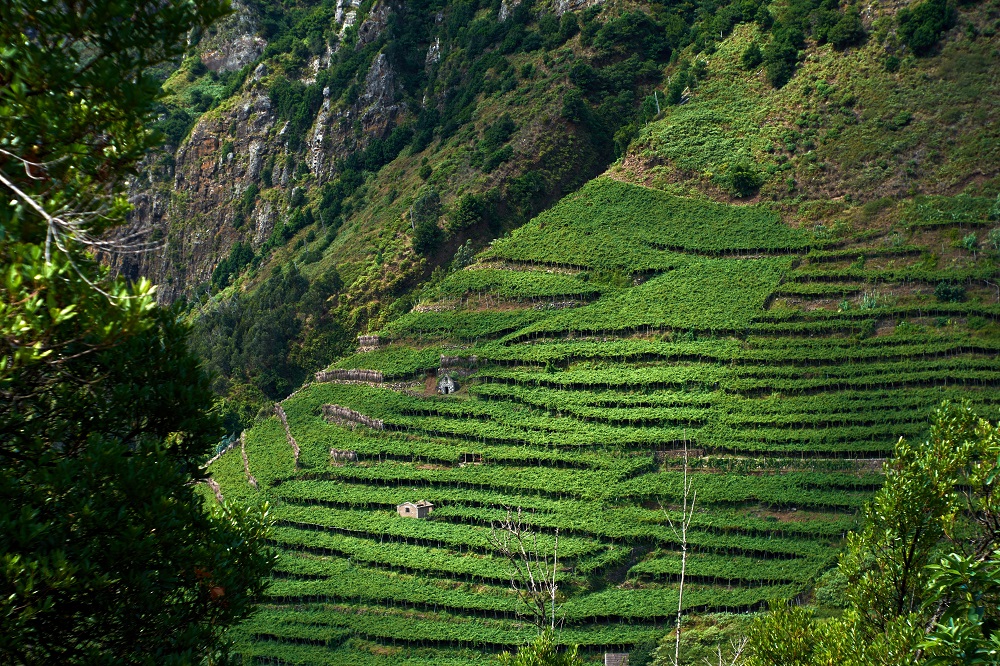
Syrah Grape Variety: The Greatest Red Grape of the Rhône
January 28, 2022
Syrah is dark-skinned and perhaps the most underrated of the 'noble' red grape varieties.
By: James lawrence / Last updated: February 3, 2025
Even the most talented publicist would struggle to rebrand Madeira as a fashionable tipple. So we’ll save them the trouble: it isn’t! This venerable fortified wine, made on the island of Madeira for centuries, has less profile and global renown than Port or Sherry. Aside from a niche market in Portugal and select destinations abroad, most consumers have little interest in drinking oxidized – and fortified – wines today.
Estimated reading time: 1 minute

Guide to Portuguese White Wine: Read more
So why are we talking about it? For three reasons: the grape varieties used to produce Madeira, not least the noble Verdelho, are increasingly used to make excellent dry table wine in locations as diverse as New Zealand and the Azores; secondly, Madeira boasts a long and fascinating history, rich in intrigue; and lastly (we dare to hope) despite the overwhelming odds, that we can excite you about this sadly neglected wine style. The best of Madeira can live for centuries; there are said to be drinkable bottles from the 1600s! So if you love wine history, you’ll love Madeira.
Untouched for many centuries, the spectacular island of Madeira became an important part of the expanding Portuguese empire during the 15th century. This was Portugal’s golden age, an epoch defined by exploration and colonization of the New World. This began with the island’s discovery by João Gonçalves Zarco, Bartolomeu Perestrelo, and Tristão Vaz Teixeira – three sea captains searching for new territories. They initially came across Madeira in 1419, albeit the first settlers did not arrive until 1425. Several years earlier, the Sicilian magnate Dom Henrique had introduced sugar cane to the Portuguese. This valuable crop quickly became the mainstay of agriculture on the island; the appetite for this newfound luxury in Western Europe was incredibly high. As a result, many merchants and traders settled in the capital Funchal, shipping Madeira sugar to the ports of northern Europe.
Meanwhile, the great Portuguese explorer Vasco de Gama sailed around the Cape of Good Hope in 1492 and opened the sea route to India. De Gama returned in 1502, establishing Portuguese trade routes in the Indian Ocean. Unfortunately, Madeira’s sugar cane industry did not survive long enough to benefit from this emerging market; overproduction led to stagnating prices in the late 1400s, while disease ravaged the sugar cane plantations across the island.
However, Madeira was soon to discover another vocation: winegrowing. According to historical records, Verdelho has been cultivated on the island since the 1400s. Indeed, it maintained its position as Madeira’s key white grape variety until the 20th century. By the late 16th century, Portugal’s trading ships regularly stopped at Funchal to replenish their supplies. The island’s growers were only too happy to sell them gigantic bottles of the local brew, typically a blend of Bual, Cercial, Malmsey, and Verdelho. However, fortification on an industrial scale only occurred in the 18th century. Yet adding spirit to the wine is only part of the ‘formula’ for producing Madeira.
The evolution of Madeira into the only fortified dessert wine that can challenge Port is a remarkable tale. It centers around the style’s importance to global shipping; bottles of Madeira wine, stored in the ship’s hold, would be subject to prolonged periods of heat during the voyage to India. When sailors eventually returned, they enjoyed this caramelized style of wine, labeled as vinho da roda (wines that have made a round trip). Over time, serendipity became a standardized practice of heating wine under natural sunlight, a method known as estufas.
This potent drink, established quite by accident, became the toast of the New World, not to mention the third US president Thomas Jefferson, who poured glass after glass of Madeira after he signed the American Declaration of Independence. Madeira is probably the world’s first example of a ‘celebrity wine’; George Washington, Alexander Hamilton, Benjamin Franklin, and John Adams were all massive acolytes. Sadly, the island’s prosperity came crashing down in the mid-19th century. Visit the island today, and growers will explain why there is a shortage of high-quality grape varieties; first oidium, then phylloxera, devastated the island’s vines in the 1800s. Therefore, it is normal for a certain amount of Tinta Negra Mole – an uninspiring workhorse grape – to enter all except the finest Madeira wines. There are still parcels of hybrid and American vines left on the island – both are considered inferior choices when making premium wine.
But the final nail in the coffin was the dramatic shift in consumer attitudes in the 20th century, as fortified and dessert wines became utterly passé. As a result, a growing number of wineries have started marketing some excellent dry styles from the grape. However, famous houses like Blandy’s continue the noble tradition of making fortified wine from Verdelho. The variety has long been appreciated for its ability to thrive in very warm climates – it has been exported to the hotter parts of California for that very reason! Nevertheless, growing Verdelho is not without its challenges. It is an early-ripening grape, susceptible to spring frost attacks and powdery mildew. But the potential rewards are great: moderately sized bunches laden with small berries packed with aroma compounds and ripe acid. The latter characteristic is why Verdelho has become increasingly popular as a table wine.
It is a popular misconception that Madeira is one style of wine. On the contrary, it is half a dozen, ranging from Malmsey to Special Reserve and Solera – the last category is rarely made today. It is also produced in a dry and sweet style, like Sherry. Verdelho Madeira, golden when young, darkens with age until it reaches a glorious nutty complexity that is divine with lighter desserts. The process that creates this amber nectar is fascinating to observe.
Sadly, the traditional practice of foot-crushing in Lagares is now only employed by a handful of estates. Instead, mechanical crushing and destemming are widely adopted. The grapes are pressed, and the juice is separated before fermentation. Large concrete vats are normally used for vinification, although some wines are fermented in oak pipes (a long and wide barrel type). Verdelho is typically fermented dry before it is racked off its lees into barrel; each style is classified according to its potential. It will then be subject to a slow heating process known as Estufagem.

This can be done in several ways. The original technique of shipping Madeira worldwide was not cost-effective, so many houses store their wines in south-facing lofts. Here, they can soak up the heat of the summer’s day, cooling overnight. Alternatively, some producers store their wines in special buildings heated by hot-water ducts. However, generic Madeira is heated in a large concrete tank with built-in heating coils for three to four months. The wine is then cooled – a very critical stage. This is because Verdelhos, unlike Malmsey wines, will not have been fortified and are therefore at risk of spoilage. Finally, it is time to fortify the wine and subject it to filtration and/or fining. In exceptional circumstances, the Madeira wine may be aged in barrel for several decades before release. Of course, this accounts for a tiny volume of the total output of wineries on the island.
From one perspective, Madeira is the greatest fortified wine style on earth. Its longevity is the stuff of vinous legend: Madeira is the most stable of all wines and, therefore, can survive centuries without becoming rancid. Indeed, the privileged few who have sampled wines from the 18th century often remark on how unbelievably fresh they are. This is due to the unique process of estufagem and the fact that super-premium Madeira spends many years in cask in the cool cellars of the great shippers. As a result, what emerges in your glass almost defies articulation: dark in color, almost black with age, honeyed, caramelized, and luscious. You have to try the best of Madeira, if only once.
Yet to focus exclusively on Verdelho’s role in Madeira would be to negate the rise of exceptional table wines based on the grape. The fact is that Madeira is simply not fashionable at all, while saline dry whites sell like hotcakes. However, if it is fermented in stainless steel at low temperatures, Verdelho delivers a crisp style of wine with pronounced citrus, stone fruit, and honeysuckle aromas. This dry and perfumed expression of the variety has become increasingly popular in Australia, while Portuguese table wines continue to make inroads across Western Europe and the US. Meanwhile, its ripe acidity and beautiful freshness ensure that Verdelho is a welcome part of any meal. The grape pairs exceptionally well with fresh shellfish, risotto, seafood linguine, and Thai food; it also works fantastically as an aperitif.
But where should you look to find these delicious wines? Particularly if you prefer to avoid a trip to California, Australia, or New Zealand! The answer is the Azores. Situated in the middle of the North Atlantic, this group of tiny islands is fortunate to have some very talented investors, not least superstar winemaker António Maçanita. At the Azores Wine Company, Maçanita fashions seductive and aromatic Verdelho from select parcels of old vines planted on ancient volcanic soils. These mineral, salty, tangy dry whites are heaven in a glass for the weary traveler. Like the unspoiled scenery and delectable gastronomy of Portugal, they nourish the soul.
If you would like us to customize an exclusive luxury tour, contact us and let us know your travel plans. We offer luxury food and wine tours for private groups of a minimum two guests. In addition, all of our private, chauffeured tours are available year-round upon request.

